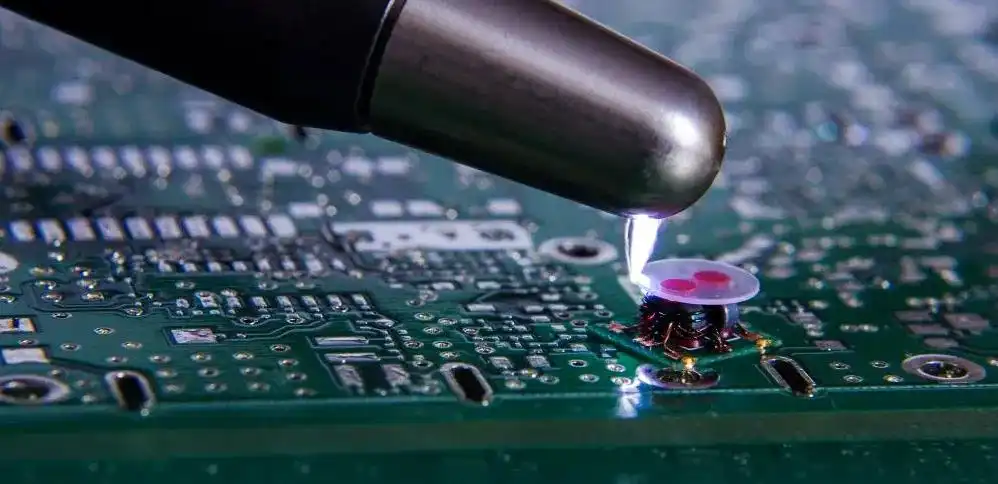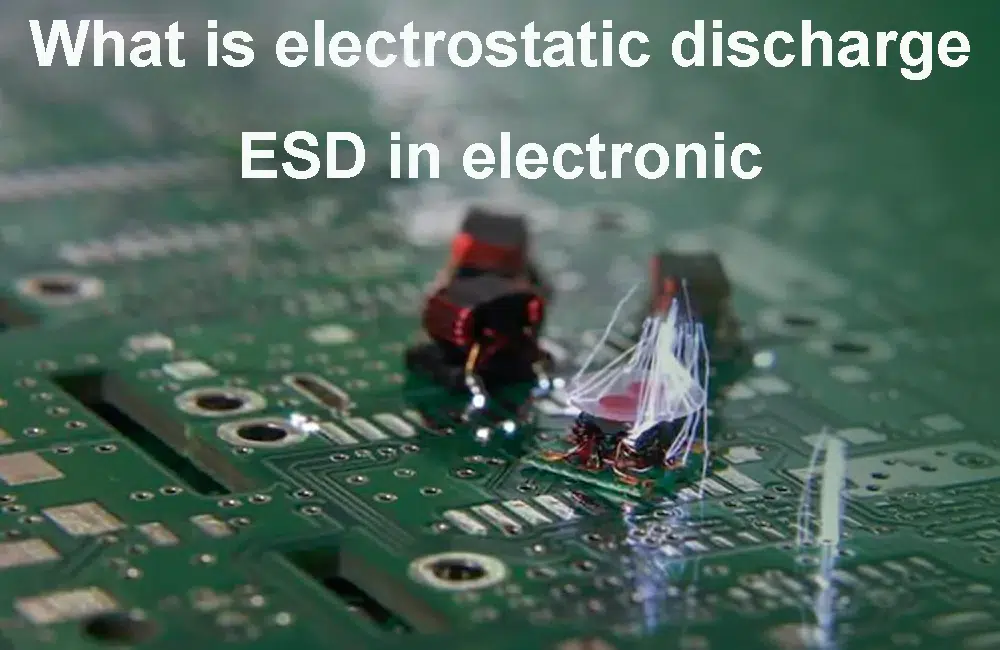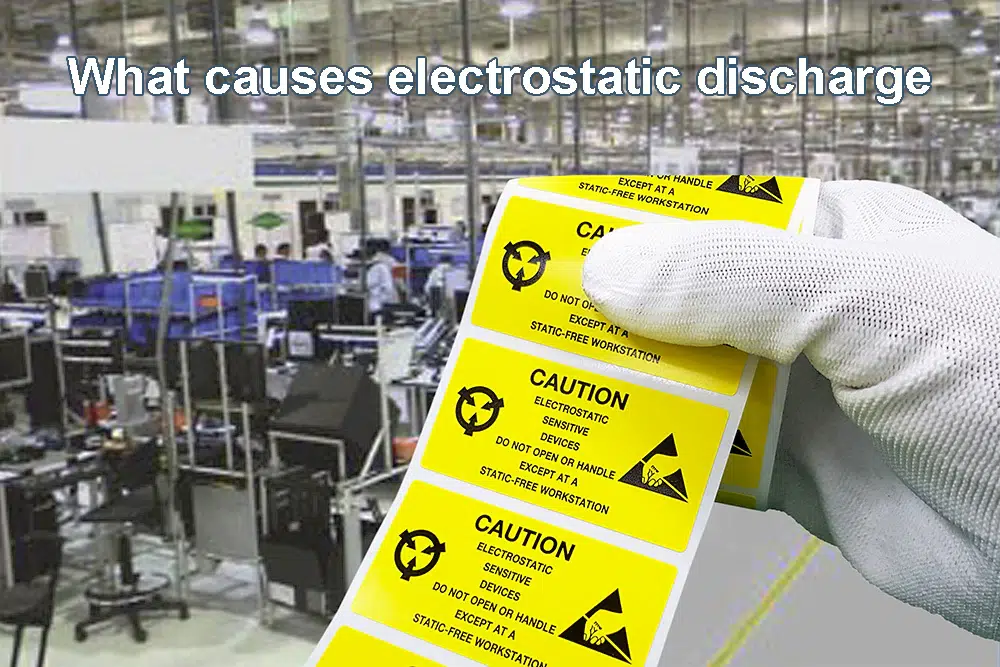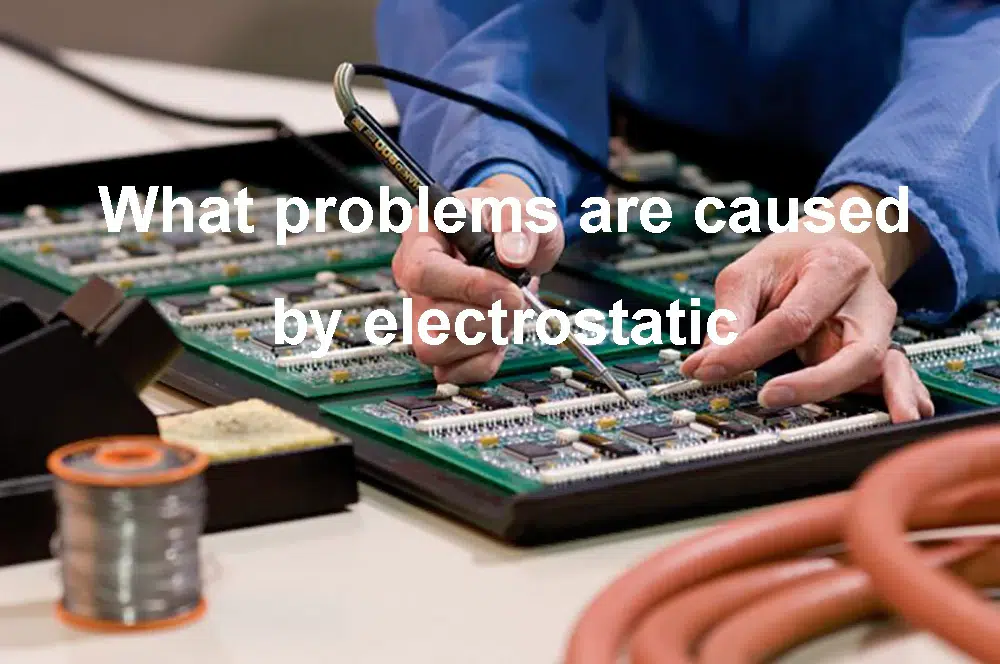
During the manufacturing, assembling, testing, handling, usage, and transportation of an electrical product, electrostatic discharge may happen at any time. Electronic equipment may incur quick damage or latent failures because of electrostatic discharge (ESD) incidents, which might lead to premature failure in the field. This might result in expensive warranty claims, product recalls, and reputational harm for the brand. The electronics sector must thus establish adequate ESD protection measures and understand the origins and consequences of electrostatic discharge.
The importance of protecting against electrostatic discharge in electronics, its causes, potential issues, how it affects electronics, the distinction between electrostatic discharge and antistatic discharge, the main sources of electrostatic discharge, components that are vulnerable to electrostatic discharge, and techniques for preventing electrostatic discharge in electronics are all covered in this article.
When two objects with differing electric potentials suddenly transmit electric charge to one another, it is known as an electrostatic discharge (ESD). Electrostatic discharge is the term used to describe the movement of electric charge between surfaces or objects in electronics, which is often brought on by separation, contact, or friction. Electrostatic discharge can be a serious threat to electronic devices and parts because it can break or destroy delicate electronic circuits, causing equipment to malfunction and lose functionality. To maintain the dependable and durable operation of electronic equipment, protection against electrostatic discharge is crucial in the electronics sector.

In the electronics sector, electrostatic discharge prevention is crucial for a variety of reasons. First and foremost, lower operating voltages and higher degrees of integration are leading to smaller and more sensitive electrical devices and components. They are hence more vulnerable to electrostatic discharge harm. Small static discharges that may not even be visible to humans may cause severe damage to sensitive electronic components, resulting in failure or a decline in performance.
Second, Electrostatic discharge incidents can readily happen in regular settings, such as when handling, transporting, or assembling electronic equipment and components. When a person contacts an electronic part or device, the static charge that has collected due to friction from human contact, movement, and clothes might discharge into the part, which could lead to ESD damage.
In order to ensure the dependable and robust operation of electronic components and devices, avoid premature failures, maintain product quality, and satisfy customers, protecting against electrostatic discharge is crucial.

Several things can result in Electrostatic discharge (ESD), including:
● Human contact: When a person contacts an electrical part or gadget, static electricity may be produced due to friction between the person’s skin, clothing, and the part’s surface. When this static charge contacts the electronic component, it may discharge into it, perhaps resulting in ESD damage.
● Material separation: Material separation, such as removing protective coatings or separating components, may produce static electricity. Separating materials with various electric potentials can lead to the buildup of static electricity, which can then discharge into surrounding electronic components and result in Electrostatic discharge damage.
● Electronic devices: While in use, electronic devices like transformers, switches, and motors can produce static electricity. This could happen because of component movement or the interaction of various materials, potentially resulting in electrostatic discharge events.
● Packaging materials: The packaging used to protect electrical devices and parts can also cause ESD occurrences. For instance, insulative packing materials may build up static charge, which, when handled or opened, may discharge into the electronic equipment or components, resulting in ESD damage.

Electrostatic discharge can lead to a number of issues with electrical parts and gadgets, such as:
Electronic components are susceptible to both immediate and latent damage from electrostatic discharge, which can result in errors, poor performance, or outright failure. Data corruption or disruption caused by electrostatic discharge can result in the loss of vital information or functionality contained in electronic devices.
● Reduction in product reliability: ESD damage can cause electronic products to be less reliable, which can result in early failures and a shorter product lifespan.
● Production yield losses: electrostatic discharge incidents that occur during industrial operations can cause yield losses, which raise production costs and lower profitability.
Electrostatic discharge damage can result in non-compliance with industrial standards and regulatory requirements, which can have negative legal and financial repercussions.
Electronics may suffer negative impacts from electrostatic discharge. The high voltage and current associated with the discharge during an electrostatic discharge incident can harm electronic components right away or over time. The discharge may result in component failure or decreased performance by producing heat, electromagnetic fields, voltage spikes, and electrical overstress. Electronic device storage (ESD) disruption or corruption can result in data loss or system failure. The dependability and profitability of electronic products may also be impacted by ESD damage due to increased warranty returns, repair costs, production yield losses, and unfavorable brand reputation.
Antistatic and electrostatic discharge differ primarily in their intent and use. Antistatic procedures are intended to stop the accumulation of static charge on materials or surfaces, which lowers the probability of electrostatic discharge incidents. Antistatic procedures use conductive or dissipative materials, grounding, humidity control, and other methods to reduce static charge creation and accumulation. While antistatic methods can sometimes prevent it, ESD refers to the actual discharge of static electricity. Electrostatic discharge protection strategies are aimed at reducing the effects of electrostatic discharge events, such as through grounding, shielding, and proper handling techniques, to minimize damage to electronic devices and components.
Human interaction is the main cause of electrostatic discharge. Static charge may be produced when a human contacts an electrical part or gadget because of friction between the person’s skin, clothing, and the part’s surface. When this static charge makes contact with the electronic component, it may discharge into it, perhaps resulting in ESD damage. The human body is a good conductor of electricity, and even minor accumulations of static charge can cause high-voltage electrostatic discharge occurrences. Therefore, employing grounded workstations or following suitable grounding and handling methods, such as wearing antistatic wrist straps, is crucial to preventing ESD damage to devices.

Electrostatic discharge damage can occur to a variety of electronic parts, including but not restricted to:
● Integrated circuit: ICs are very vulnerable to electrostatic discharge because they are so small and have sensitive structures inside.
● Transistor: Like MOSFETs, IGBT and BJTs, transistors can be damaged by electrostatic discharge, which can change their behavior or cause them to fail completely.
● Diode: Diodes can be broken by electrostatic discharge, which can change the breakdown voltage, or the forward voltage drop. Diodes are things like LEDs and rectifiers.
● Capacitor: If a device’s insulator is made of ceramic or tantalum, damage from an electrostatic discharge could change the capacitance or leaking features of the device.
● Electrostatic-sensitive device: ESDs like electrostatic-sensitive diodes, varistors, and safety devices are meant to protect electrical parts from ESD events, but they can also be damaged by them.
To avoid electrostatic discharge damage in these vulnerable electronic components, effective electrostatic discharge protection measures, such as grounding, shielding, and safe handling techniques, are crucial.

Several safeguards must be put in place to prevent electrostatic discharge in electronics, including:
● Materials for electrostatic discharge protection: Using antistatic or dissipative materials, such as mats, floors, and packaging, can help stop static charge accumulation and discharge in electronic components.
● Electrostatic discharge-safe handling techniques: By adhering to the recommended ESD-safe handling techniques, such as holding electronic components by their edges and avoiding direct contact with sensitive areas, ESD damage can be avoided.
Using Electrostatic discharge protective tools, like wrist bands, grounding cords, ionizers, and shielding bags, can increase your protection against electrostatic discharge. Electrostatic discharge education and awareness programmes can assist in preventing ESD damage to electronics by informing staff members about the dangers of ESD and the right handling techniques.